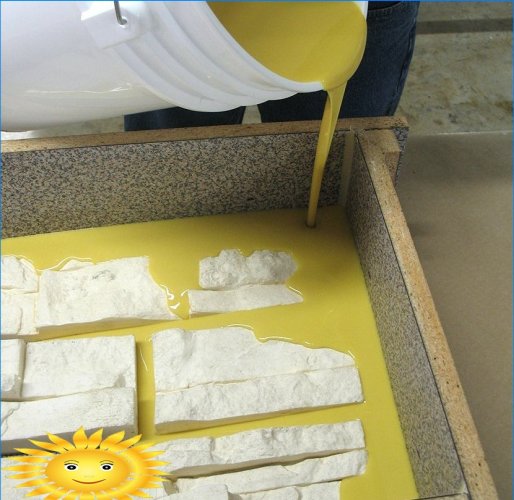Comment Faire Un Moule Pour Sculpture - A good quality mold is essential for any successful sculpture project. Without a properly made mold, even the most talented sculptors will not be able to achieve the desired final result. Luckily, there are many methods and materials available to create high-quality molds, from plaster to silicone to alginate. With a bit of guidance and practice, anyone can learn how to make their own molds for sculptures.
Plaster Molds
Materials Needed:
- Plaster of Paris
- Water
- Mold release agent (petroleum jelly or cooking spray)
- Bowl and spoon for mixing
- Modeling tool

A plaster mold is a great option for beginners or for those who want to create simple sculptures. Here’s how to make one:
- Cover the original sculpture with a mold release agent such as petroleum jelly or cooking spray. This will make it easier to remove the sculpture from the mold once it is dry.
- Mix the plaster of Paris according to the instructions on the packaging. It should be a smooth, pourable consistency.
- Pour the plaster into a container and gently press the sculpture into the plaster, making sure that it is fully submerged. You can use a modeling tool to press the sculpture down if necessary.
- Allow the plaster to dry completely. This can take several hours or overnight.
- Carefully remove the sculpture from the mold. You may need to use a modeling tool to help loosen it from the plaster.
Silicone Molds
Materials Needed:
- Silicone rubber
- Catalyst
- Mold release agent (petroleum jelly or cooking spray)
- Modeling clay
- Mixing container

Silicone molds are a popular choice for more complex sculptures, as they can capture fine details and allow for multiple-piece molds. Here are the steps involved:
- Create a base for your sculpture by molding modeling clay around the bottom of the sculpture. This will help the silicone rubber to stay in place.
- Mix the silicone rubber according to the instructions on the packaging. It will typically involve combining the silicone with a catalyst to initiate the curing process.
- Apply the silicone rubber to the sculpture, making sure to cover it fully and evenly. You may need to apply multiple layers depending on the size and shape of the sculpture.
- Allow the silicone rubber to cure completely. This can take several hours or overnight.
- Once the silicone rubber has cured, carefully remove it from the sculpture. You can use a modeling tool to help loosen it from the sculpture if necessary.
- Create a plaster or resin cast using the silicone mold. This will give you a replica of your original sculpture.
Alginate Molds
Materials Needed:
- Alginate powder
- Water
- Mold release agent (petroleum jelly or cooking spray)
- Bowl and spoon for mixing
- Modeling tool

Alginate molds are a great choice for making molds of body parts, such as hands or faces. Here’s how to make one:
- Mix the alginate powder with water according to the instructions on the packaging. It should be a smooth, pourable consistency.
- Apply a mold release agent such as petroleum jelly or cooking spray to the body part you want to mold.
- Pour the alginate over the body part, making sure to cover it fully and evenly. You will need to work quickly, as alginate sets quickly.
- Once the alginate has set, carefully remove it from the body part. You can use a modeling tool to help loosen it if necessary.
- Create a plaster or resin cast using the alginate mold. This will give you a replica of the body part you molded.
Tips and Ideas
- Always wear gloves and protective clothing when working with mold-making materials, as they can cause skin irritation.
- Experiment with different materials and techniques to find what works best for your project.
- Consider using a release agent such as petroleum jelly or cooking spray to make it easier to remove your sculpture or mold from the mold-making material.
- When making a mold of a complex or multi-piece sculpture, consider making a silicone mold to capture all the details.
- Consider using plaster or resin to create your final sculpture. These materials can be painted and finished to achieve the desired final result.
How To Make a High-Quality Mold for Your Sculpture
Making a high-quality mold is essential for any sculpture project. With the right materials and techniques, anyone can learn how to make their own molds for sculptures. Whether you’re a beginner or an experienced sculptor, consider trying out one of these methods to create a mold that will help you achieve the perfect final result. From plaster to silicone to alginate, each method has its advantages and disadvantages. Experiment with different techniques to find what works best for your project, and don’t be afraid to ask for help or advice from other sculptors. With practice and patience, you’ll be able to create molds that will take your sculptures to the next level.
View more articles about Comment Faire Un Moule Pour Sculpture